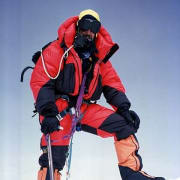'Rucking' Adopts Mountaineering Techniques to Supercharge Your Hike

Serious mountaineers know that two factors effect the difficulty of a climb: Altitude and weight in your backpack. It’s simply harder to climb as you go higher, and with more weight on your back. Climbing ‘Alpine’ style is a method to carry as little weight as possible to enable the climber to move faster with less. The opposite is true for hikers seeking to supercharge their workouts. Actually increasing the weight of your load will improve your workout and unleash tremendous health benefits.
RUCKING
Heather Richardson reported the benefits of ‘Rucking’, also known as ‘Yomping’ or ‘Tabbing’ in a recent National Geographic article. The term Rucking simply refers to carrying weight in your backpack to increase the intensity of your hike. This increased intensity increases one’s heartrate, burns more calories and builds skeletal muscle. Richardson notes that Rucking originated in the military. Soldiers have long marched with heavy backpacks to build endurance, strength, and mental toughness – they call this practice ‘ruck marching', a drill used by militaries since the seventh century B.C. This workout technique has become a popular and cost-effective addition to the most basic exercise – walking. And it’s gaining popularity.
Rucking sounds exotic, but it’s accessible to everyone – no gym membership needed, just a backpack with some added weight like full water bottles, groceries or dumbbell weights. Increase weight as you get stronger.
“We know that exercising in a gym environment isn’t for everyone,” says Jen Wilson, senior exercise and health practitioner at Nottingham Trent University, “but strength training should be for everyone. So, if you are someone who loves being outdoors, and the thought of going to the gym is just an absolute no-no, then adding some additional weight to your backpack…is a great way to improve your joint health and build a bit of strength and resilience.”
Wilson sited many studies suggesting that rucking-like exercises can offer significant benefits, including increased bone mineral density, enhanced metabolic rates, and improved cardiovascular health. Getting outside and rucking has also proven to seriously improve mental health – reducing stress and anxiety, and enhancing general well-being. Wilson adds, however, that while rucking outdoors is ideal, if “you feel safer on a treadmill or that’s your only option, then a treadmill is just as good.”
“Yomping (the British military term for rucking) isn’t to be taken lightly,” says Jeff Saayman, a former British Royal Marines Commando. “It can cause serious injury to the spine, neck, knees, hips, etcetera, if not done right.” It is always smart to seek professional council before beginning any new exercise regimen, especially for those with a history of injury or pain. “Start light, start short, gradually build up the duration, and then build the weight from there,” says Wilson. “I would start as light as 5-10 percent[of your] body weight.”
GORUCK
Companies like GORUCK provide accessories, including weighted backpacks, that will facilitate your entry into Rucking, and enhance the experience. GORUCK was founded Jason McCarthy, a former member of the United States Army Special Forces – McCarthy understands backpacks, and the benefits of carrying weight. The Rucking trend is taking off. GORUCK reported a 65 percent year-on-year increase in Rucker 4.0 pack sales and a 44 percent growth in site sessions from 2023 to 2024. The most basic workout in history has evolved into a positive and healthy trend. Keep walking, hiking and climbing – just remember to carry some weight.
